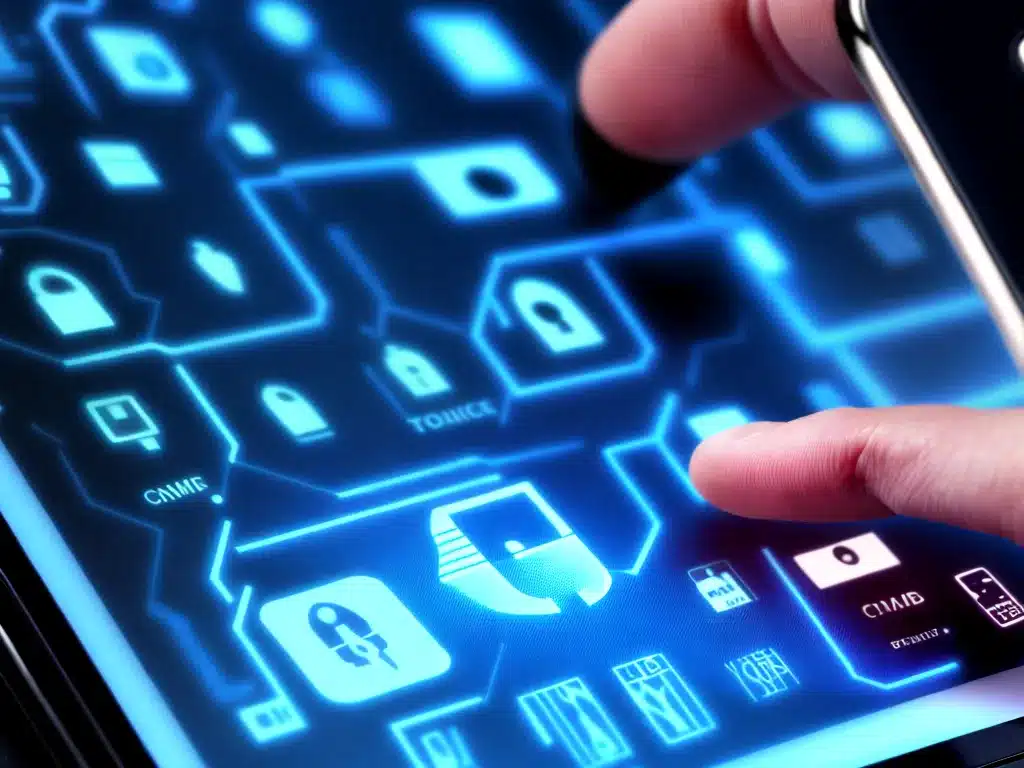
Protecting Your Mobile Data from Cybercriminals
As more and more of our lives move onto our mobile devices, it’s crucial that we take steps to protect our data from cybercriminals. Here are some ways I protect my mobile data:
Use Strong Passwords
The first line of defense for any device is a strong password. I make sure to use passwords with a mix of upper and lower case letters, numbers, and symbols. I avoid using common words or phrases, or personal information like birthdays in passwords. Using a password manager helps me generate and remember secure passwords.
Enable Two-Factor Authentication
Where available, I enable two-factor authentication, which requires a second form of verification such as a code sent to my phone when logging into an account. This provides an extra layer of security in case my password is compromised. I use two-factor authentication for email, social media, banking, and any other sensitive accounts.
Be Wary of Public Wi-Fi Networks
I avoid accessing sensitive accounts or data on public Wi-Fi networks. These networks are often unsecure, allowing cybercriminals to more easily intercept traffic and steal data. For mobile banking or shopping, I use my cellular data plan or a VPN.
Keep Software Up to Date
I make sure to promptly install any available updates for my device’s operating system and apps. Updates often contain vital security patches to fix vulnerabilities that could be exploited by hackers. Enabling automatic updates makes this easier.
Limit App Permissions
I’m careful about which apps I install and pay attention to the permissions they request. I only grant access to contacts, photos, location and other data if I feel the app has a legitimate need for it. Avoiding unnecessary permissions reduces the data apps can access if compromised.
Use Encryption
I take advantage of encryption available on my device to protect sensitive files and communications. On an iPhone, I use Face ID or Touch ID for encryption. On Android, I enable full disk encryption. Encrypting data means it cannot be read if my device falls into the wrong hands.
Install Mobile Anti-Virus Software
Reputable anti-virus software provides real-time protection against malware, spyware, risky apps and network threats. I use Avast Mobile Security on my Android device to scan new apps before installation and monitor network traffic.
Avoid Suspicious Links and Attachments
I’m cautious about clicking links or downloading attachments in emails, texts and instant messages unless I’m 100% sure the source is legitimate. Cybercriminals commonly use malicious links and files to infect devices or trick users into revealing passwords.
Back Up Data
I regularly back up my contacts, photos, videos and other important data to cloud storage and external hard drives. This ensures I won’t lose priceless memories or personal information if my phone is damaged, lost or hacked. I enable automatic backups whenever possible.
Monitor Accounts for Suspicious Activity
I periodically review my online accounts for any unauthorized access attempts, and check bank and credit card statements for unfamiliar charges. Detecting potential misuse early allows me to change passwords and alert institutions before significant damage occurs.
Staying vigilant about mobile security takes some time and effort, but is well worth it to protect my personal and financial data from falling into the wrong hands. With careful password habits, updated software and some common sense, I can dramatically reduce my risk of becoming a cybercrime victim.












